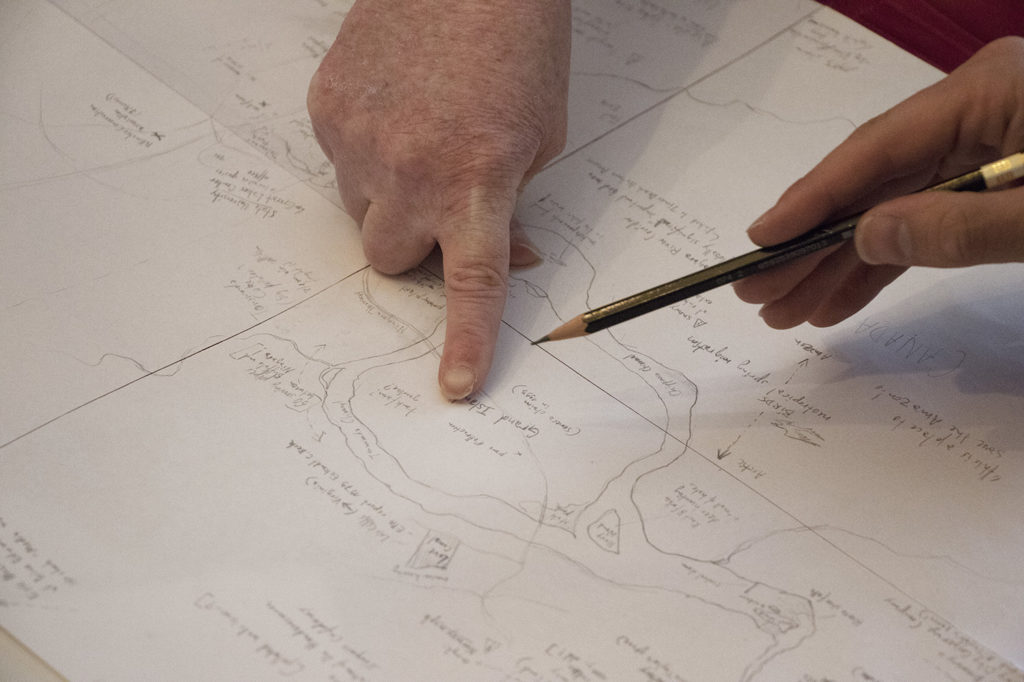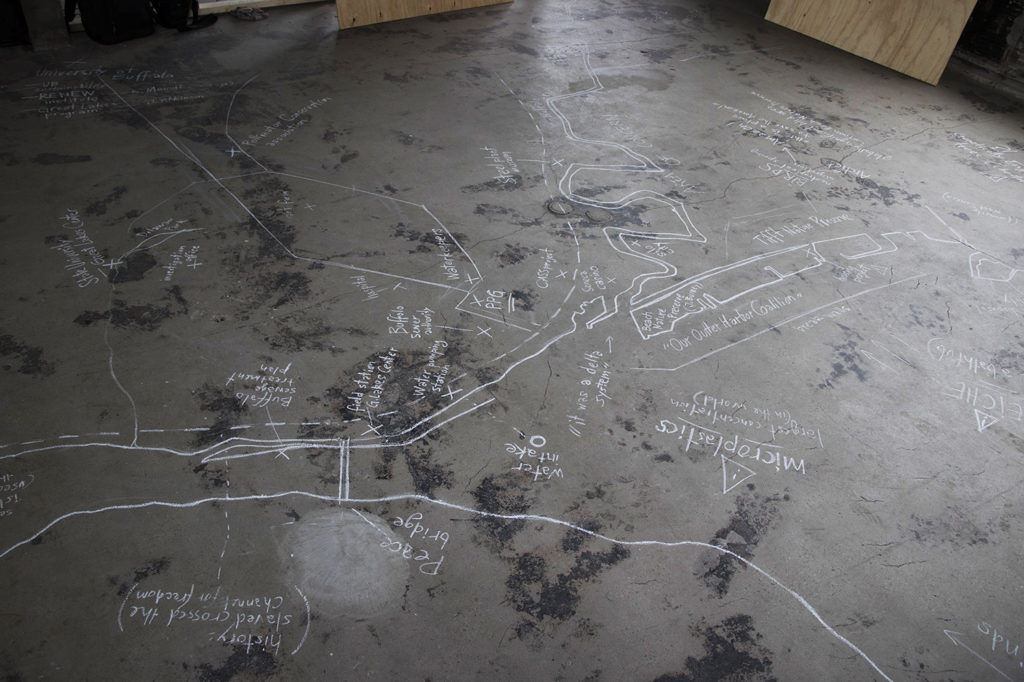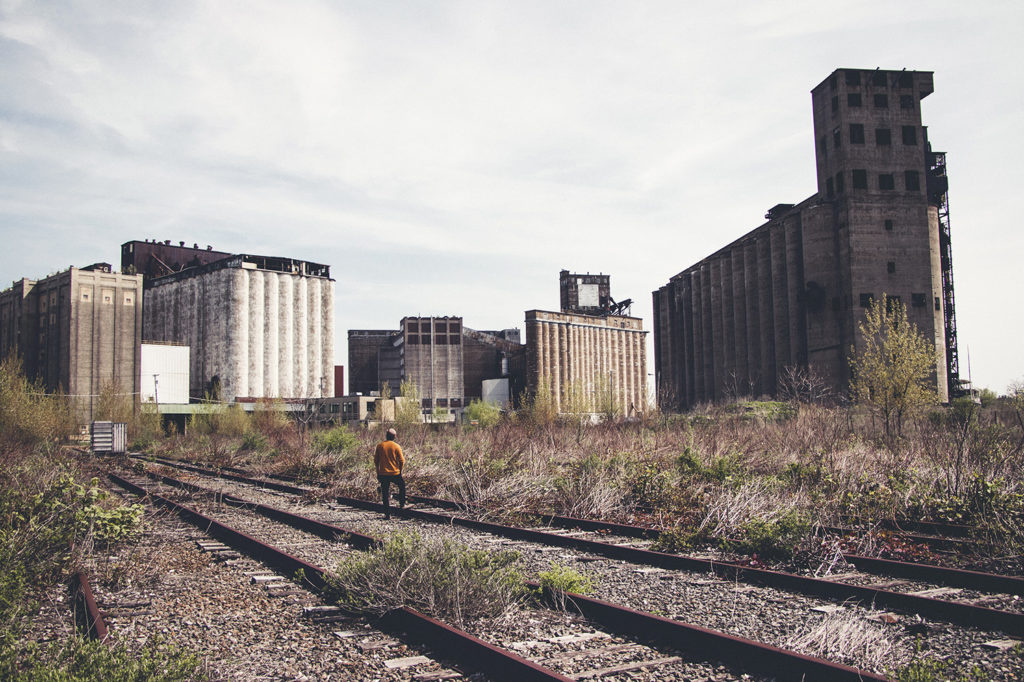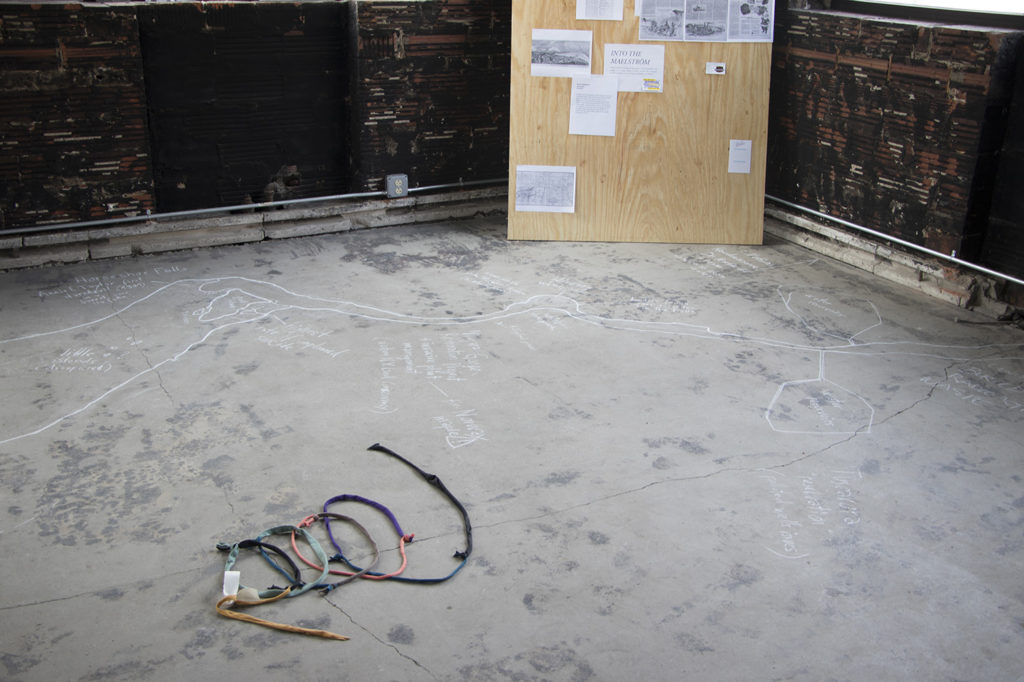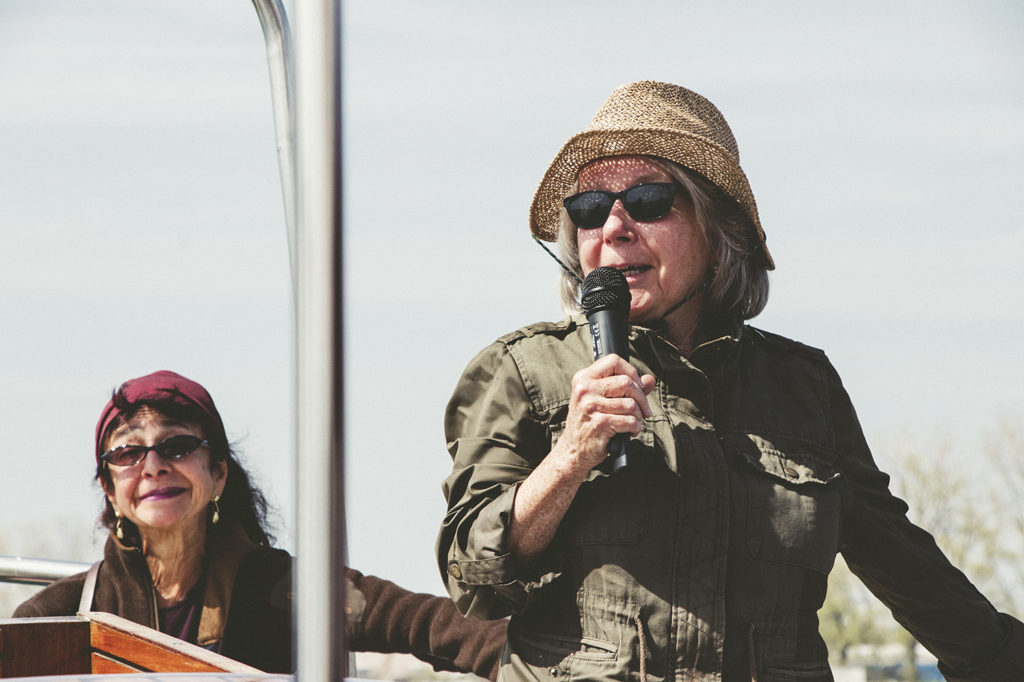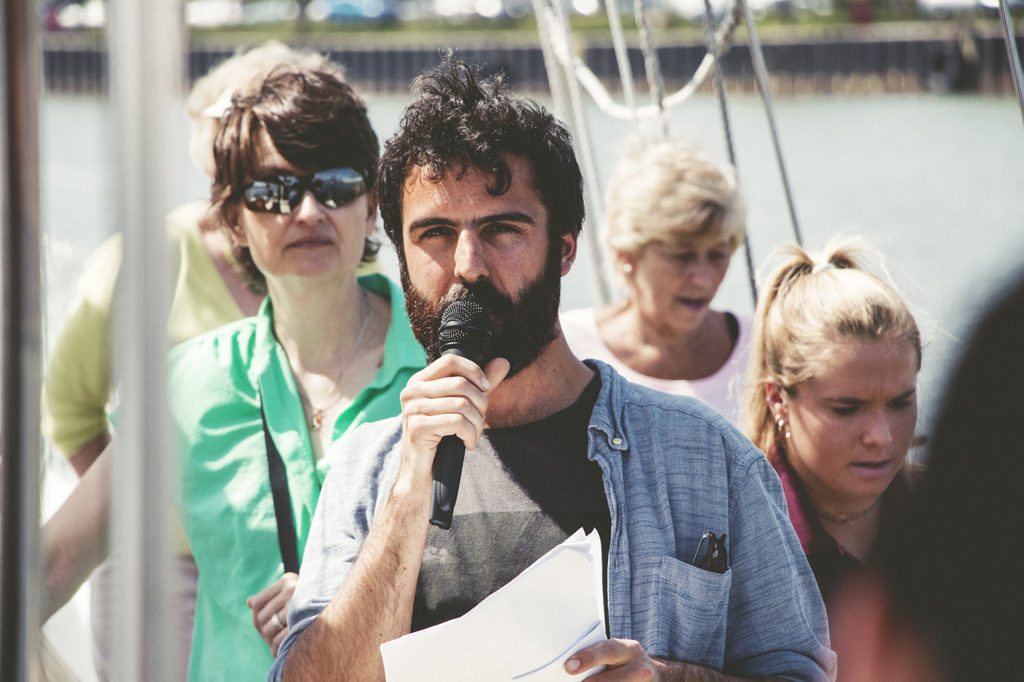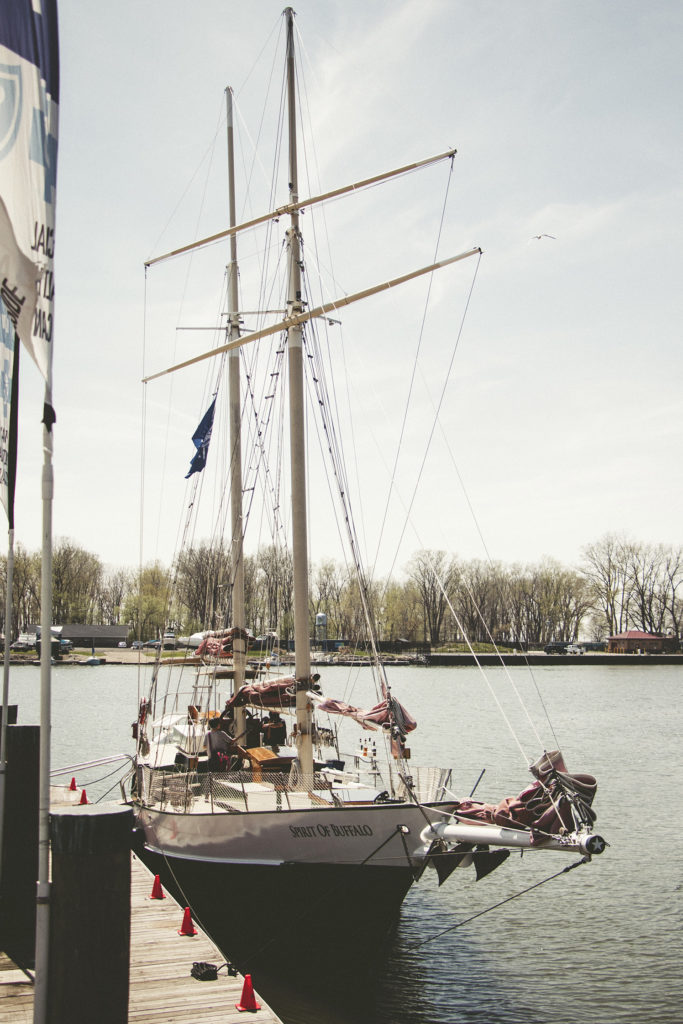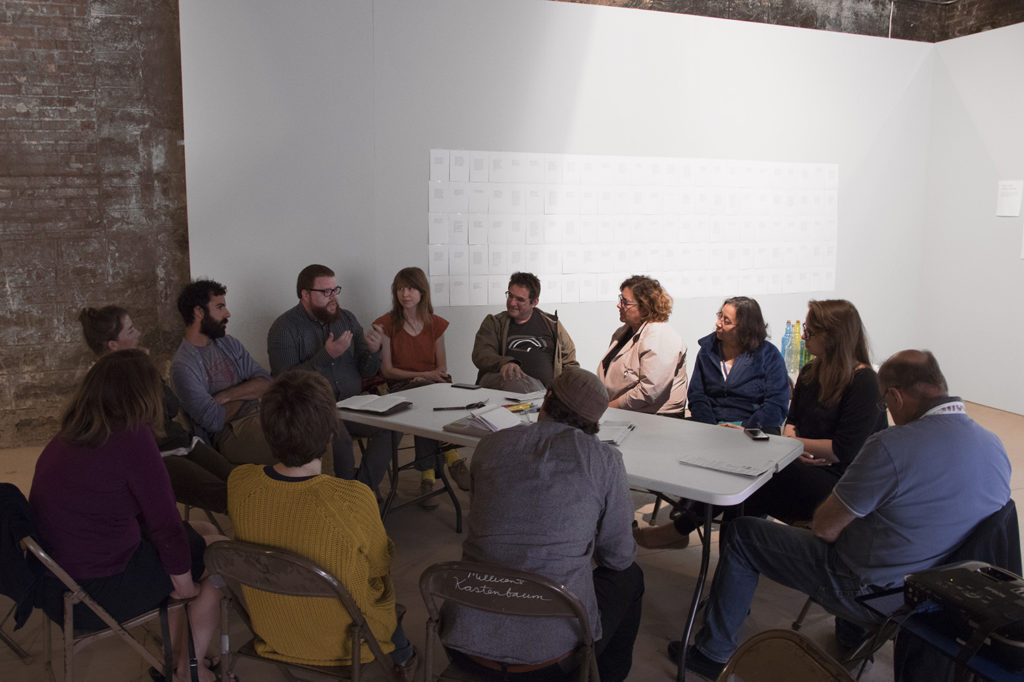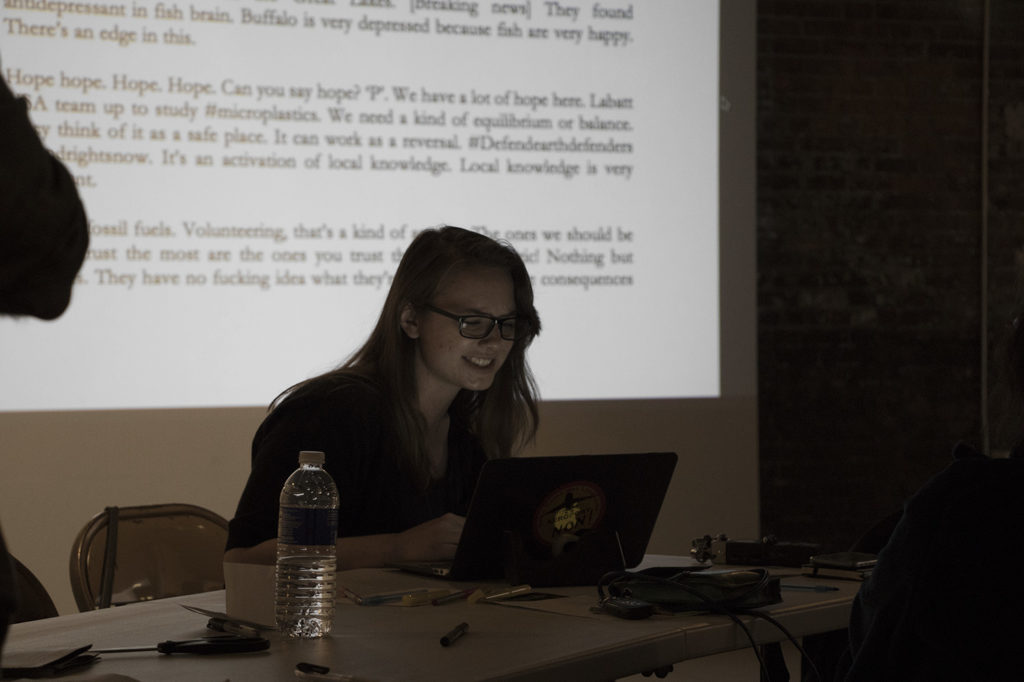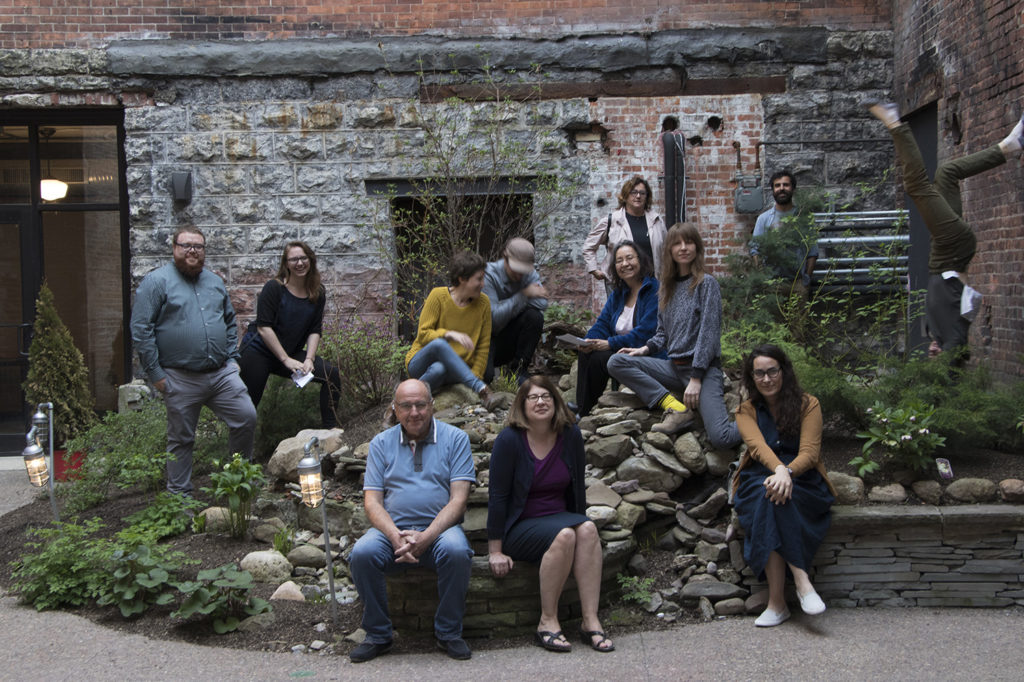A tale as a tool – Buffalo/Niagara
Indeterminacy festival, Buffalo (NY), 2018
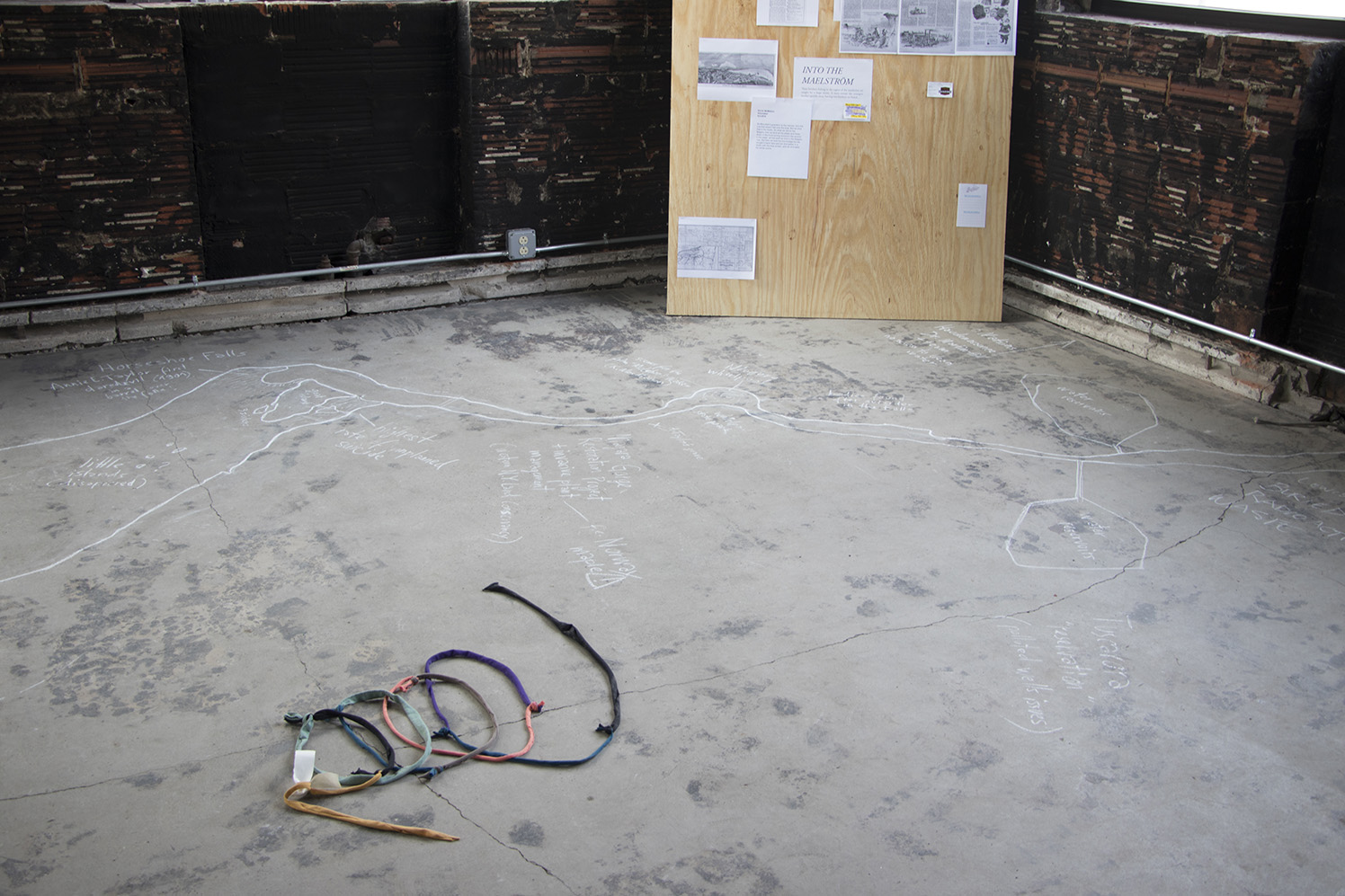
À l’invitation du Techne Institute de l’Université de Buffalo (UB), Sandrine Teixido et Aurélien Gamboni ont développé avec le curateur indépendant Stéphane Verlet-Bottéro un «bureau d’investigation» pour le Festival Indeterminacy. Pendant cette résidence, ils ont exploré les transformations environnementales passées et actuelles à Buffalo et dans la région des Grands Lacs, à proximité des fameuses chutes du Niagara qui ont inspiré Edgar Poe dans ses descriptions du maelström.
L’écologie complexe de cette région, sévèrement marquée par un passé industriel aujourd’hui déclinant, apparaît comme un espace de cohabitation entre de nombreuses forces contradictoires, et entre différents futurs en devenir. 40 ans après la tragédie de Love Canal – un quartier d’habitation massivement contaminé par des résidus chimiques, dont le scandale avait servi de moteur aux mouvements environnementaux américains dès la fin des années 1970 – les inégalités d’exposition à la pollution industrielle ou d’accès à l’eau potable sont toujours d’actualité pour les communautés les plus précarisées. Les mouvements qui œuvrent pour une « transition juste » font face aux tenants du business as usual et aux promoteurs de la « croissance verte ». Emergent alors des assemblages inattendus, comme ces terrains contaminés convertis en zones naturelles protégées pour accueillir les oiseaux migrateurs durant leur voyage de l’Arctique à l’Amazonie, ou encore des initiatives associant les savoirs autochtones des Peuples premiers et ceux des sciences modernes autour des politiques de l’eau.
Photographies: Petros Chytiris
__________
PROGRAMME COMPLET
Do you hear anything? Do you see any change in the water?
Boat tour – Departure from Central Wharf at Canalside
16 May, 3–5pm
In Poe’s short story ‘A Descent into the Maelström’, a fisherman leads the narrator onto a cliff to behold the whirlpool. From this point of view, he tells a story that no one ever believed: how he went down and escaped the great whirl, by observing and analyzing the trajectories of objects caught in the vortex …
This collective research experiment takes the form of a 2-hour journey across Lake Erie and Buffalo waterways, on board the beautiful sailboat Spirit of Buffalo. We invite witnesses from all backgrounds – inhabitants, researchers, campaigners, community members – to share their experiences and knowledge, whether specialized or based on daily life observations. As climate disruption and ecological damage tend to intensify, the vastness and diversity of their effects implies that everybody, in their own place, can become a witness. For instance, highway drivers noticing fewer insects caught on their windshield are echoed by entomologists’ extinction studies.
All are invited to come and share in the context of this mobile assembly. Gathered around the powerful image of the maelström, we will rely on Poe’s story as a tool to guide our discussions. How do we relate to transformations in the landscape? How are we emotionally affected by these changes? What does it mean to observe a phenomenon from the edge? and to be part of it at the same time?
The vortex rescripted
Cass Project
18 May, 5:30–7:30pm
In this writing workshop, Nikolaus Wasmoen, visiting assistant professor in Digital Scholarship and English at Buffalo University, will propose a new plot to rewrite Poe’s ‘A Descent into the Maelström’ together with the public. Conjuring references to vortices and maelstroms from writers Wyndham Lewis, Ezra Pound, Hugh Kenner, Toni Morrison, we will discuss how, in addition to environmental issues such as the climate crisis, the story provides tools to model social media as a structured flow. The workshop will result in a new script, written collectively and in real time.
The investigation office
Duende Building
19 May, 3–8pm
The Maelström investigation office will gather drawings, notes, prints, cartographies, transcripts and materials collected by the artistic trio during their inquiry into environmental perturbations and adaptations in Buffalo. This afternoon will be the chance to gather the persons interviewed during the research residency and invite the public to exchange and further contribute to the research process.
__________
Avec le soutien de NA!Project
